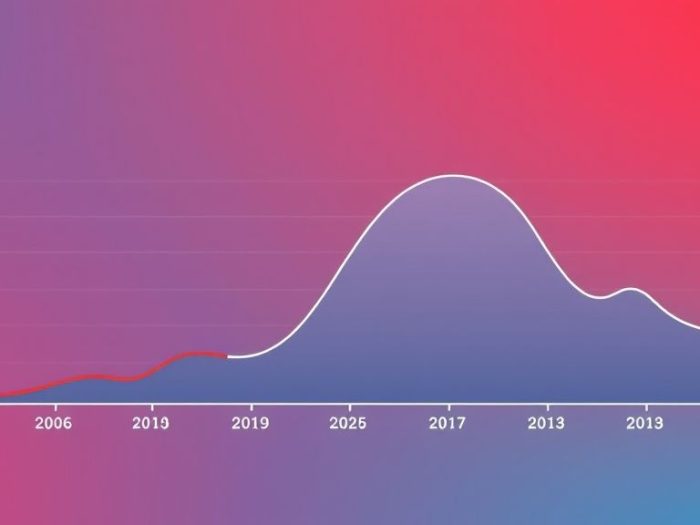One of the biggest concerns for retirees is the sequence of returns risk. This risk can
significantly impact how long your retirement savings last, especially during market
downturns. This article explains sequence of returns risk and provides strategies to protect
your retirement during market crashes.
Understanding Sequence of Returns Risk
Sequence of returns risk refers to the risk that the timing and order of your investment
returns can significantly affect your portfolio’s longevity. It’s particularly relevant
during the withdrawal phase of retirement.
Imagine two scenarios:
-
Scenario A: You experience several years of poor returns early in
retirement. -
Scenario B: You experience several years of poor returns later in
retirement.
Even if the average return is the same over the entire period, Scenario A is much more
damaging. Early losses deplete your portfolio more quickly, leaving less money to benefit
from subsequent market recoveries.
Why Sequence of Returns Risk Matters in Retirement
During your working years, you’re contributing to your retirement accounts, so market
downturns have less impact. However, in retirement, you’re withdrawing funds, making the
sequence of returns critical.
Strategies to Protect Your Retirement
1. Diversification
A well-diversified portfolio helps mitigate sequence of returns risk.
-
Asset Allocation: Invest in a mix of stocks, bonds, real estate, and
other assets. -
Low Correlation Assets: Include assets that have low or negative
correlation to the stock market.
2. The 4% Rule (with Caution)
The 4% rule (withdrawing 4% of your initial portfolio each year, adjusted for inflation)
can be a starting point, but it’s not foolproof.
-
Flexibility: Be prepared to adjust your withdrawal rate if the
market performs poorly.
3. The 3% Rule
A more conservative approach is to use the 3% rule, withdrawing only 3% of your initial
portfolio each year. This increases the likelihood of your savings lasting.
4. Cash Reserve
Maintain a cash reserve (e.g., 1-2 years’ worth of expenses) in a safe, liquid account.
This allows you to avoid selling investments during market downturns.
5. Bucketing Strategy
Divide your portfolio into “buckets” based on time horizons:
- Bucket 1 (1-2 years): Cash and short-term bonds.
- Bucket 2 (3-7 years): Intermediate-term bonds and balanced funds.
- Bucket 3 (7+ years): Stocks for long-term growth.
6. Dynamic Withdrawal Strategies
Adjust your withdrawals based on market performance.
-
Percentage-Based Withdrawals: Withdraw a fixed percentage of your
portfolio each year. - Guardrails: Set upper and lower limits on your annual withdrawals.
Example
Suppose you retire with $1,000,000 and plan to withdraw 4% annually ($40,000).
-
If you experience a 30% market decline in the first year, your portfolio drops to
$700,000. Withdrawing $40,000 would significantly deplete your savings. -
A more conservative approach, like the 3% rule or flexible spending, would help
mitigate this risk.
Conclusion
Sequence of returns risk is a significant concern for retirees. By diversifying your
portfolio, considering conservative withdrawal rates, maintaining a cash reserve, and
implementing dynamic withdrawal strategies, you can better protect your retirement savings
and navigate market volatility more confidently.
Related Keywords
Sequence of returns risk, retirement planning, retirement withdrawal strategy, 4% rule, 3%
rule, retirement portfolio, retirement income, market volatility, retirement risk
management, retirement savings.
Frequently Asked Questions (FAQ)
1. What is sequence of returns risk?
Sequence of returns risk is the risk that the timing and order of your
investment returns can significantly affect your portfolio’s longevity,
especially during withdrawals in retirement.
2. Why does sequence of returns risk matter in retirement?
It matters because in retirement you’re withdrawing funds, so early losses
deplete your portfolio more quickly, leaving less to benefit from recoveries.
3. How can diversification help mitigate sequence of returns risk?
Diversification across asset classes (stocks, bonds, real estate) and including
assets with low correlation to the stock market can help cushion the impact of
stock market downturns.
4. What is the 4% rule and how does it relate to sequence of returns?
The 4% rule is a withdrawal guideline. While it can be a starting point, it
doesn’t eliminate sequence of returns risk, and adjustments may be needed.
5. What is the 3% rule?
The 3% rule is a more conservative approach, suggesting a 3% initial withdrawal
rate to increase the likelihood of your savings lasting.
6. What is a cash reserve and how does it help?
A cash reserve is holding 1-2 years’ worth of expenses in a safe, liquid account,
allowing you to avoid selling investments during downturns.
7. What is the bucketing strategy?
The bucketing strategy involves dividing your portfolio into different “buckets”
based on time horizons, with shorter-term buckets holding more conservative
investments.
8. What are dynamic withdrawal strategies?
Dynamic withdrawal strategies involve adjusting your withdrawal amount each year
based on market performance.
9. Is sequence of returns risk a concern for all retirees?
Yes, sequence of returns risk is a concern for all retirees who rely on
investment withdrawals for income.
10. Can I completely eliminate sequence of returns risk?
You can’t completely eliminate the risk, but you can significantly mitigate it
through the strategies outlined in this article.



